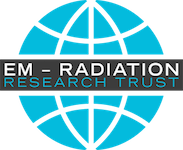. 2024 Apr 10;12(2):51–61. doi: 10.4103/jmau.jmau_121_23
Effect of Electromagnetic Radiation of Wi-Fi Router on Thyroid Gland and the Possible Protective Role of Combined Vitamin C and Zinc Administration in Adult Male Albino Rats
Abstract
Introduction:
Electromagnetic radiation (EMR) is widely used nowadays in various fields due to rapid expansion of technology and affects different organs such as endocrine glands. Antioxidants protect the cells and act as a free radical scavenger.
Aim of Work:
The aim of the study was to clarify the effect of EMR emitted from Wi-Fi router on the thyroid gland of adult male albino rats and the possible protective role of combined Vitamin C and zinc.
Materials and Methods:
Thirty adult male albino rats were divided into three groups: Group I (control group), Group II (received combined Vitamin C and Zinc in one tablet called IMMUNO-MASH), and Group III (experimental groups). Group III was divided into two subgroups (A and B) according to the duration of exposure: 6 h and 24 h/day. Each of these groups was divided into two equal subgroups. One was exposed only to EMR while the other was exposed to EMR and received combined Vitamin C and zinc. All rats were weighed at the beginning and at the end of the experiment. The thyroid gland was prepared for general histological, anti-calcitonin immunostaining, and ultrastructural study. Furthermore, measurement of total serum T3, T4, and thyroid-stimulating hormone (TSH) hormone levels and quantitative analysis of immunoreactive C-cells were done. Then, statistical analysis was done on the number of immunoreactive C-cells, data of the body weight, and the hormonal levels.
Results:
A highly significant increase in the body weight in subgroups exposed to EMR for 24 h/day was observed. Furthermore, they showed a highly significant decline in T3 and T4 levels together with a highly significant increase in TSH level. With increasing period of exposure, there was a variable degree of deterioration in the form of congestion and dilatation of blood vessels, cellular infiltration, follicular disintegration, vacuolar degeneration, and desquamated follicular cells in the colloid. The C-cells showed a significant increase in the mean number compared with the control group. Ultrastructural analysis of follicular cells revealed colloid droplets, deteriorations in rough endoplasmic reticulum, degenerating nuclei, and swollen mitochondria according to the dose of exposure. There was apparent improvement with the use of combined Vitamin C and zinc.
Conclusion:
Wi-Fi radiation has a very serious effect on thyroid gland morphology and activity. Moreover, experimentally induced hypothyroidism by radiation resulted in increased C-cell number. Combined Vitamin C and zinc could have a protective role against this tissue damage.


